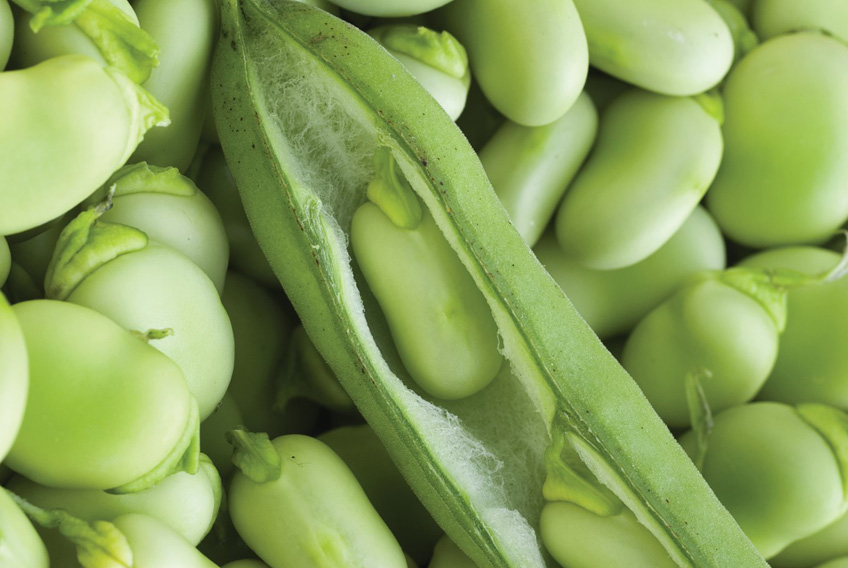Broad beans are so tasty, and so nutritious! It’s one vegetable you should try.
Watch them closely at this time as the flowers are setting pods, for aphid attack. We sprayed our crop with Yates Nature’s Way (ready to use) garlic and pyrethrum spray.

Broad beans grow like crazy through winter and their beautiful white and black, pea-shaped flowers appear in winter and early spring. They do stretch your
patience though as it seems an age before the beans themselves appear, and then when they do come, the harvest is quick, and the kitchen preparation
quite lengthy! Broad beans are much larger than the usual warm season green beans, and they need to be shelled. I like the young beans simply shelled
and steamed. Restaurant chefs always double pod them, popping them out of their pale green inner shell after blanching to reveal the bright green bean
beneath. By the end of the season the pods are quite large, the flavour stronger and the beans are often pureed.
Find out more about growing broad beans here!
Sow beans, climbing and dwarf. Bamboo makes a good support trellis for climbing varieties.
Dwarf or bush varieties: ‘Borlotti’, ‘Cherokee Wax’, ‘Butter’, ‘Bonaparte’, French, ‘Snap’, and ‘Hawkesbury Wonder’.
Climbing beans: ‘Purple King’ with high yielding purple pods eaten raw, but turn green when cooked, ‘Blue Lake’, a very prolific producer, and ‘Snake’
– long, thin pods up to 40cm long fruit.
Runner beans: ‘Scarlet Runner’ is ideal for cooler climates. If the roots are left in the ground, it will reshoot next spring.
Read more about growing beans in Graham’s story …
Start a no-dig garden on your verge. Once you have the all-clear (from your local council), create a giant layered sandwich: cover the entire area with
newspaper, topped with layer of cow manure, then a layer of straw, another layer of cow manure and another layer of straw.
Click here to find out how!